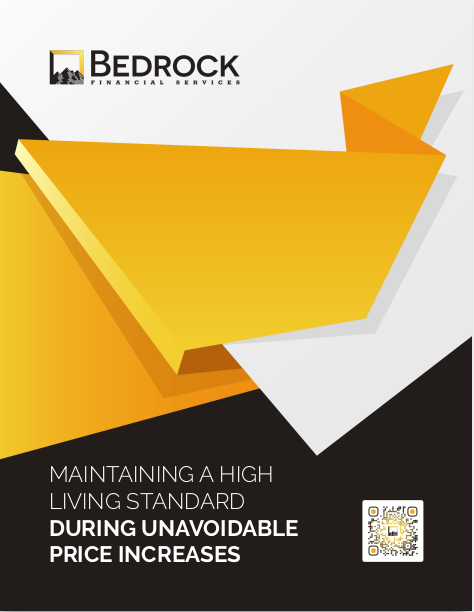Key Takeaways
-
Smart automation can help you generate more leads in 2025 without increasing your workload—if your flow is designed with precision and purpose.
-
A streamlined automation sequence saves time, nurtures trust, and delivers higher-quality prospects that are more likely to convert.
Why You Need Automation More Than Ever
You already know how competitive the financial services space is in 2025. Clients are bombarded with messages, ads, offers, and more—meaning it’s harder than ever to stand out. Even if your expertise is unmatched, your outreach needs to be consistent, timely, and relevant. That’s where automation becomes essential.
But automation isn’t just about saving time. Done right, it’s about scaling your personal touch and giving your best self to more people—without burning out or sounding robotic. It’s the difference between chasing every lead manually versus creating a repeatable, professional journey that runs behind the scenes and nurtures trust 24/7.
The Real Problem: Most Automations Are Set and Forget
Many financial professionals rely on outdated or underperforming automations:
-
A single welcome email that leads nowhere
-
A newsletter that no one opens
-
Generic scheduling reminders
The issue isn’t the tools—it’s the strategy. Automations must be dynamic, data-informed, and behavior-triggered to stay relevant. If you’re using the same messages for every lead, you’re leaving conversion potential on the table. The modern client expects relevance, timing, and a sense that you’re paying attention, even if you’re not personally hitting “send.”
What a Smart Automation Flow Looks Like in 2025
A smart automation flow doesn’t just automate tasks. It mimics the steps you’d take if you had unlimited time to guide each lead personally. The ideal flow achieves three core objectives:
-
Qualify leads without manual effort
-
Nurture trust over time with valuable insights
-
Prompt action at the right moment
Let’s break this flow into specific, manageable components.
1. Lead Entry and Tagging (Immediate)
When a new lead comes in—whether from your website, webinar, referral, or social media—the first step is to tag and segment them.
Use intake forms that:
-
Ask for basic info (name, email, age group)
-
Include a single key qualifier (e.g., retirement timeline or current financial concern)
-
Offer an optional comment box for open-ended insight
From there, your system should auto-tag:
-
Source (where they came from)
-
Intent level (cold, warm, hot)
-
Interest category (e.g., life insurance, retirement planning)
This tagging drives the rest of your automation logic. The better your tags, the more relevant your messages will be.
2. Welcome and Qualification Series (Day 1–7)
In the first week, your goal is to make a strong impression and gather more context without overwhelming the lead. This is the moment to stand out by being clear, helpful, and human.
Flow example:
-
Day 1: Welcome email with brief intro, your professional promise, and what they can expect
-
Day 2: Short video or infographic explaining your approach and client experience philosophy
-
Day 4: Personalized message asking one strategic question to qualify further (e.g., “What’s your #1 financial goal this year?”)
-
Day 6: Soft resource offer, like a checklist or free download tailored to their interest
-
Day 7: Offer to book a 15-minute call or simply reply with a question
This sequence filters out unqualified leads while drawing the right ones closer. It also establishes an early tone of service—not sales.
3. Education and Value Nurture (Week 2–5)
Over the next three to four weeks, you’re not selling. You’re guiding. This period is all about gently reinforcing your credibility and building interest without pressure.
Send content tailored to the tag and segment you assigned earlier. This could include:
-
Weekly emails addressing their specific concern (e.g., “3 questions to ask before buying life insurance”)
-
Short-form videos or quick-read articles (300-400 words max)
-
Check-ins that build the relationship (e.g., “Thought you might find this helpful” messages)
-
Soft calls to action (e.g., “Curious how this might apply to your situation?”)
Each message should:
-
Reinforce trust and credibility
-
Demonstrate relevance to their goals
-
Gently encourage deeper interaction
Make sure no more than 5–7 days pass between touchpoints. Frequency matters just as much as content—consistency signals professionalism.
4. Trigger-Based Action Campaigns (Ongoing)
Once a lead clicks a specific link, opens 3+ emails, or fills out a second form, trigger a new workflow based on their behavior. This is where automation gets powerful, allowing you to respond in real time.
Examples of trigger-based flows:
-
Booked a call? Start a pre-call prep sequence with short tips, a short form, or introductory materials to help them get the most out of the conversation.
-
Watched a retirement video? Send retirement-focused case studies, tax strategies, or next steps tailored to someone in that phase.
-
No response in 30 days? Trigger a re-engagement sequence with a different format, like a quiz, single-question survey, or seasonal tip.
These flows are what make automation feel personal and timely—not canned or generic. The more behaviorally responsive your campaigns are, the more likely they are to result in conversions.
5. Long-Term Lead Recycling (Months 2–6+)
Not every lead is ready today—and that’s okay. Life changes, and your role is to stay present in a respectful, professional way.
Create a long-term sequence for colder leads that:
-
Sends one email every 2–4 weeks
-
Mixes personal anecdotes, seasonal reminders, and light educational content
-
Occasionally invites them back to take action with a refreshed CTA
-
Promotes upcoming webinars, new services, or timely updates
This kind of slow-burn nurture keeps your name in their inbox—and mind—without being intrusive.
What You Gain From This Flow
When you build an automation sequence like this, you achieve three things:
-
Consistency: You show up regularly without needing to remember who’s where in the pipeline.
-
Scalability: You can nurture 100 leads with the same quality of care you’d give to 10.
-
Clarity: You can measure and improve every step based on data, not guesswork.
Plus, you create a business rhythm that feels sustainable. Automation done right doesn’t mean doing less—it means doing the right things, automatically, predictably, and professionally.
Mistakes to Avoid When Setting Up Your Automation Flow
Even with the right tech, execution matters. Watch out for these common missteps:
-
Overloading the first emails: Don’t dump everything in email #1. Spread content out strategically.
-
Skipping segmentation: One-size-fits-all messaging makes no one feel special. Segmentation is what makes automation feel personal.
-
Not testing your sequences: Regularly check for broken links, outdated info, or awkward transitions. Read every email as if you’re the lead.
-
Failing to evolve: What worked in 2024 might not work now. Review your flows quarterly and adjust based on response data.
-
Ignoring the unsubscribe: Make opting out easy. A healthy list is better than a big one.
How to Get Started Today
You don’t need to build everything at once. Start with a three-part sequence:
-
A welcome message with value clarity
-
A follow-up that asks one strategic question
-
An invitation to connect or learn more
Once that’s in place, build on it. Add tags, refine based on behavior, and gradually expand.
Don’t delay because the system isn’t perfect. Perfection is built through iteration. Just getting your first automation live can start improving your efficiency.
Use tools that offer automation triggers, dynamic content, conditional logic, and segmentation. These are non-negotiables in 2025 if you want better performance and a scalable client journey.
Let Smart Automation Handle the Heavy Lifting for You
A well-built automation flow is one of the most powerful assets in your business. It doesn’t just free up your time—it improves your relationships, conversions, and credibility. You reduce your response lag, make follow-up effortless, and never forget to nurture a lead again.
If you’re ready to scale your outreach without scaling your workload, it’s time to act.
We at Bedrock Financial Services offer automation tools and training tailored to financial professionals like you. From lead capture to multi-touch campaigns, our systems help you build relationships on autopilot—without losing your human touch.
Sign up with us today and let us help you design a smarter flow that turns leads into lasting clients.







